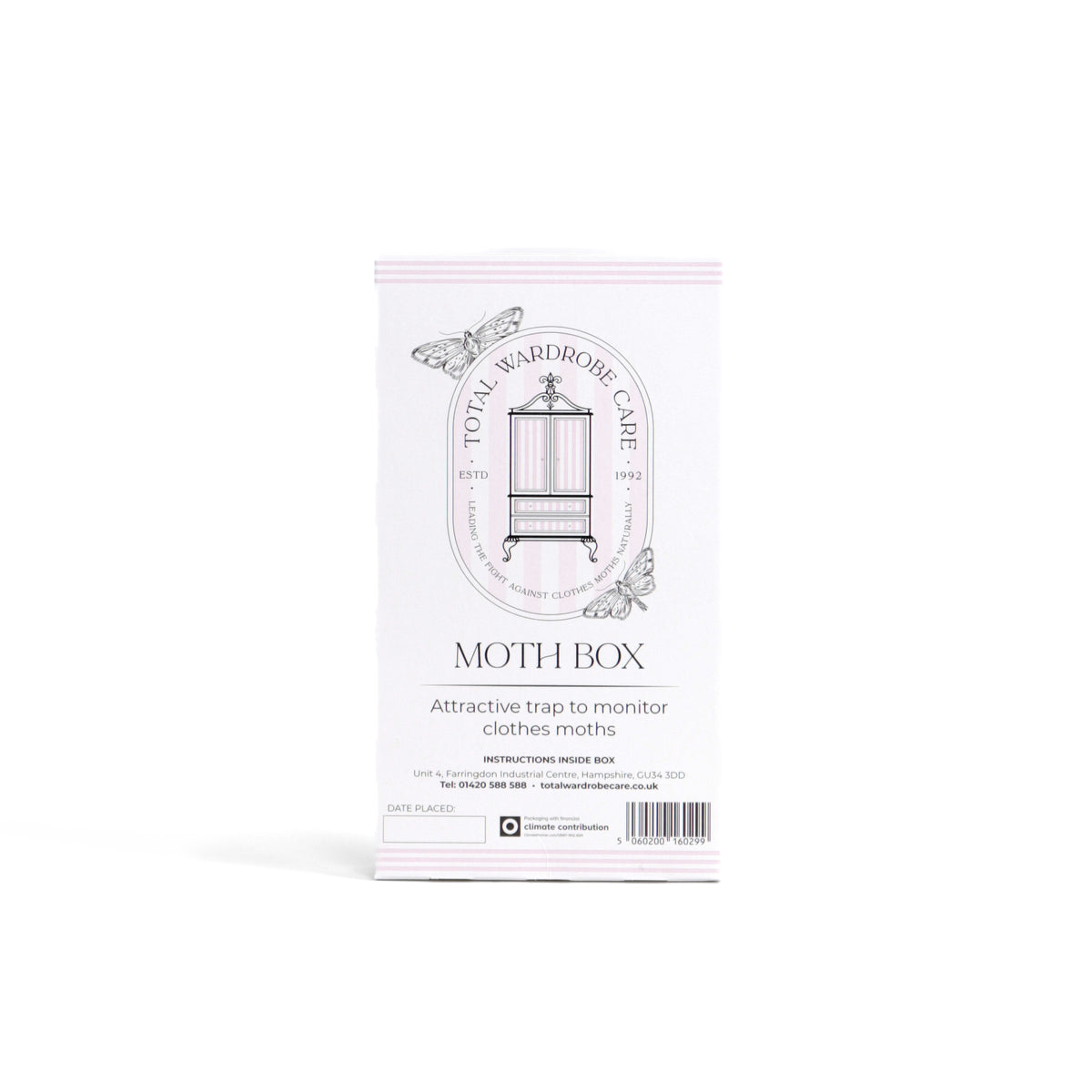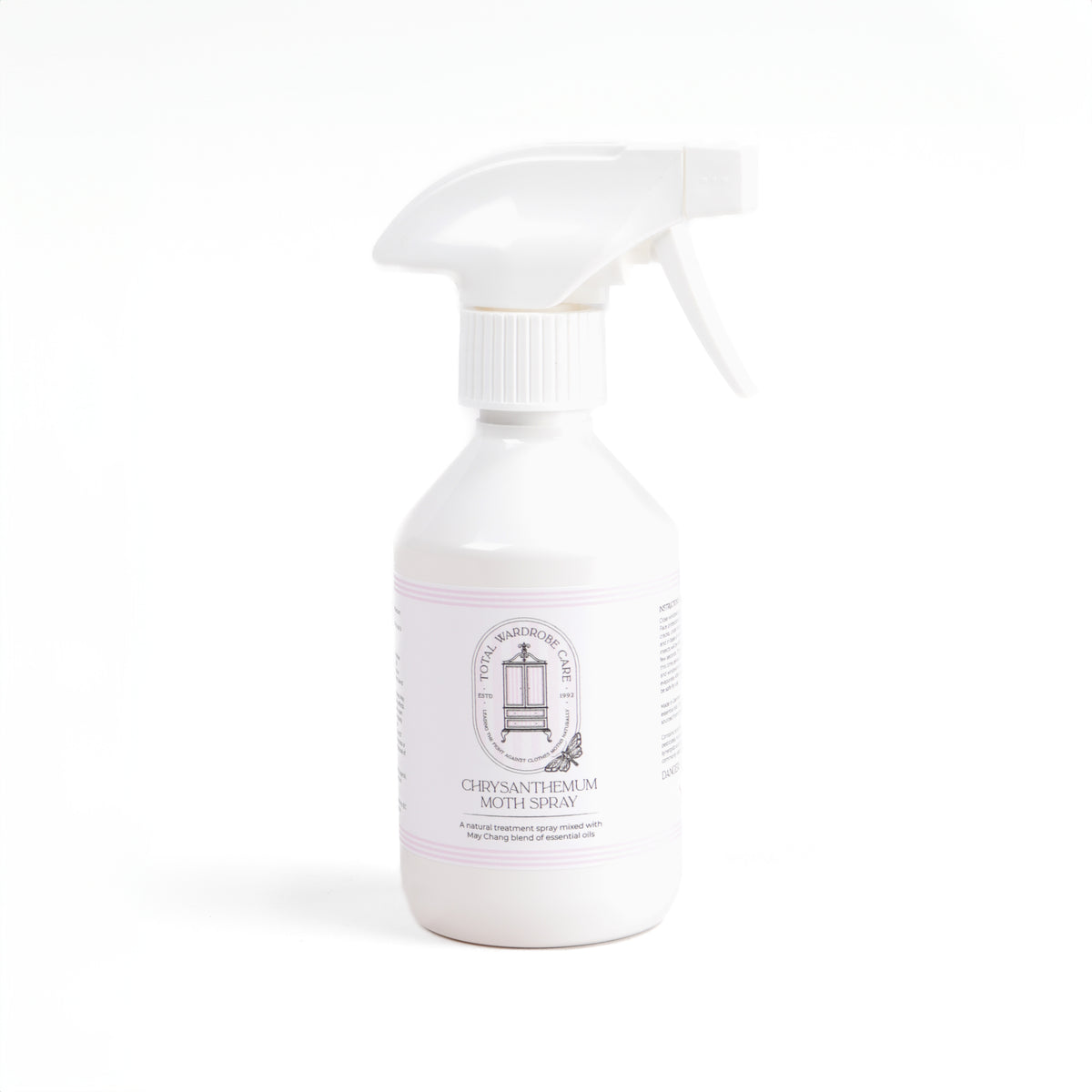On discovering you have clothes moths, most people will instinctively type ‘moth balls’ into a search engine, because we all remember moth balls, don’t we?
Nearly all of us can recall being exposed to the horrible smell of moth balls at some point in our lives. However, when desperation takes hold, and we know clothes moth can induce feelings of desperation, it is human nature to reach for what we know. The problem is the term ‘moth balls’ is broad and depending on who you buy them from, the active ingredient varies. You may be looking for the original moth ball, but chemicals in these are banned and for good reason, so we thought it would be useful to give you a bit of background information before you buy.
WHAT ARE MOTH BALLS MADE OF?
If you look at the product labels, modern moth balls use pyrethroids such as Transfluthrin, which is none too pleasant either. To be effective, moth balls are designed to be opened in a sealed container holding the clothes you wish to fumigate. Used in this way, the ingredients are not harmful, as we do not inhale or come in contact with the gasses which are released. However, if the packaging is opened outside of a sealed container, or clothes are not aired before wearing, this is when humans and animals can become harmed by a large amount of the fumes released.
Inhalation of or skin contact with Transfluthrin is known to cause nervousness, anxiety, convulsions and skin allergies, amongst other symptoms, so it is important to follow the instructions on the label when using moth balls.

WHAT DO MOTH BALLS SMELL LIKE?
The pyrethroid in modern moth balls is odourless. Traditional moth balls, the ones we know from our childhoods, contain one of two chemicals, napthalene or paradichlorobenzene. These are white opaque crystal-like balls, and they have a tell-tale strong, unpleasant, acrid smell that many associate with moth balls.
Find out how to get rid of moth ball smells here.
ARE MOTH BALLS HARMFUL TO HUMANS?
Traditional naphthalene moth balls are harmful to humans. Both naphthalene and paradichlorobenzene work by sublimation, which means that they give off toxic fumes that kill moths. They are designed to be stored with clothes in an airtight container, so the fumes build up over time. However, when the vapours are inhaled by humans or come into contact with the skin through wearing clothes stored with moth balls, they can have serious health effects.
WHY ARE MOTH BALLS BANNED?
Old-fashioned moth balls containing naphthalene or paradichlorobenzene were banned in the EU Environmental Protection Agency in 2008 because of their potential risk to human health. Both chemicals can cause ill health by breathing in fumes over time or ingestion, which is a serious risk for small children. The ill effects cause damage to red blood cells and the onset of jaundice in young babies.
On all counts, the most serious risk of exposure to moth balls is to young children aged three and under. It’s possible for children to suffer the effects of poisoning just from wearing clothes or blankets stored with naphthalene moth balls, and there is evidence that the unborn child can suffer through crossing over the placenta. Also, a section of the population with a genetic condition called G6PD deficiency is more susceptible to the effects. This genetic makeup is found predominantly in people of African, Asian, Mediterranean, and Middle Eastern descent.
WHAT ANIMALS DO MOTH BALLS KEEP AWAY?
This depends on the type of moth balls you are using. Pyrethroid insecticides, meaning those with active ingredients such as permethrin or transfluthrin (there are many more), are considered broad spectrum. This means they work on a wide range of insects, not just the clothes moth. However, a moth ball is designed to be placed in a sealed clothes storage box, so it will be active against the insects that go in your wardrobes and drawers, namely clothes moths, for a long time. It is important to always read the label and use the product how it has been intended by the manufacturer.
The traditional napthalene and paradichlorobenzene-based moth balls, which we stress again are banned, are active against insects and animals.
So, if traditional moth balls are banned, why are we telling you? Well, a quick search on the internet, and you will find a range of moth ball products, some which openly state the ingredient is naphthalene and some which don’t explain what is inside at all but look suspiciously similar to the traditional moth balls. You could easily buy them without realising they are banned and dangerous. If a product doesn’t tell you what’s inside it, we would ask the vendor before you have it delivered to your door.

SAFE, NATURAL MOTH BALL ALTERNATIVES THAT WORK
You'll be pleased to know that there are harmless alternatives to moth balls! And as always, prevention is better than a cure.
We understand the panic that comes from discovering clothes moths. We've helped enough tailoring clients in our time, and after years of research, we're telling you that there are lots of really good, natural, environmentally friendly, and above all, safe ways to get rid of moths without resorting to moth balls.
Clothes moths will choose anywhere in your house that is dark, warm, undisturbed, and has a food source. This includes soft furnishings such as the back of curtains, carpets, and rugs, as well as wardrobes and chests of drawers. It is also important to remember skin cells, hair, food particles, and body odour are all smells that attract moths. For this reason, laundering clothes before storing or putting them back in wardrobes or drawers will also help reduce the risk of infestation.
Total Wardrobe Care have been in business for over 12 years, so we are now experts in the field of clothes moths. We know where to locate them, we know how to eliminate them, and we know how to deter them—without the use of moth balls.
If you suspect you have moths or you already have a house wide infestation, then you will need to start a full and systematic process to get rid of them and we have just the tools to help. Our Moth Trap Box, and Moth Decoy both use the specific pheromone that the female clothes moth uses to attract the male. These products locate and disrupt the mating cycle and are used by museum conservators who are charged with protecting our national treasures. We have a blog dedicated to a moth elimination programme using these along with our Chrysanthemum Spray.
For deterring clothes moths, we have developed products that are tried and tested, traditional and trusted natural ingredients. We have developed two natural blends using ingredients which have been used for centuries to deter moths. Our May Chang and Vetivert blends include Lavender, Cedarwood, Patchouli, Laurel, Rosemary, Clove Bud & Thyme. You can opt for Drawer Sachets, Hanging Sachets for wardrobes, Drawer Liners and more. Clothes moths hate the smell which we on the other hand find very pleasant.
In pest control circles, it is often said that there is no ‘silver bullet’ for eliminating a pest, that is why we have put together a range of products which work in different ways. It’s called Integrated Pest Management and it works!

NEED HELP?
For any clothes moth related problems we are here to help, so please do not hesitate to Contact Us for our expert advice.












